Theo Verelst Local Diary Page 59
I've ditched the usual header for the
moment, I think it doesn't help much anyhow.
This page is copyrighted by me, and may be read and transfered by any
means only as a whole and including the references to me. I
guess thats normal, the writer can chose that of course, maybe
I´ll make some creative commons stuff one day, of course I have
made Free and Open Source software and even hardware designs available!
This
page is under contruction, so check back later, too.
Sat Nov 29 15:04, 2008
Graphics! I could rent the Pixar Bluray with most of their public short
movies and of course watched the films and the story of Pixar a number
of times, also with different settings and on the (720) beamer, which
was great.
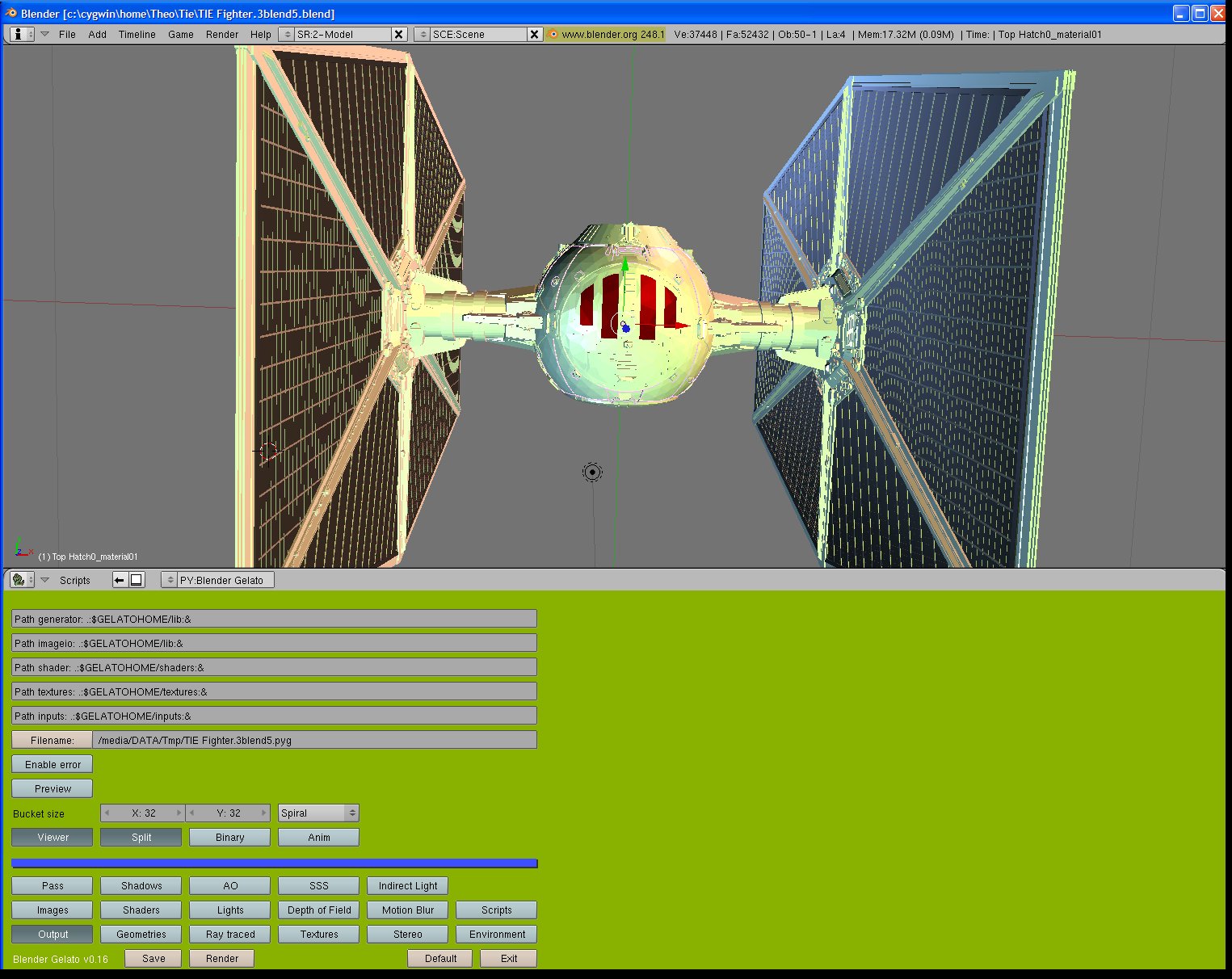
The spacecraft imported from a internet souce in blender (latest
version) with the latest blender to gelato python script from the
NVidia forum. On the bottom the export scripts' buttons.
After using Render, an exported set of .pyg (the example
script files of NVidia are call run.pyg which sounds funny) files
results (of course the virtual camera has been adjusted, and I added
several light sources) of which this
is the main one. You'd need to have all the other files too, which is a
bit much to put here (it would be quite possible on request): I'd like
to stick with the idea I could put all web documents on the server on a
Usb or other external sata flash (SSD) drive for future use, but by
looking at the example (I had to work a bit to adapt it like I did) you
might be able to do similar things (as I wrote, the model itself in 3ds
form is on a web site, cudas to the person who made it!).
A rendering of the above, with no more than 3 light sources with no
reflections or indirections or shadows (and no global illumination
pass), so apart from the pro-accuracy (and adjustable high quality
filtering) and the not to simple model (the fins on the side ar in the
model, not textures) this is the simplest (=fast) rendering method with
Gelato:
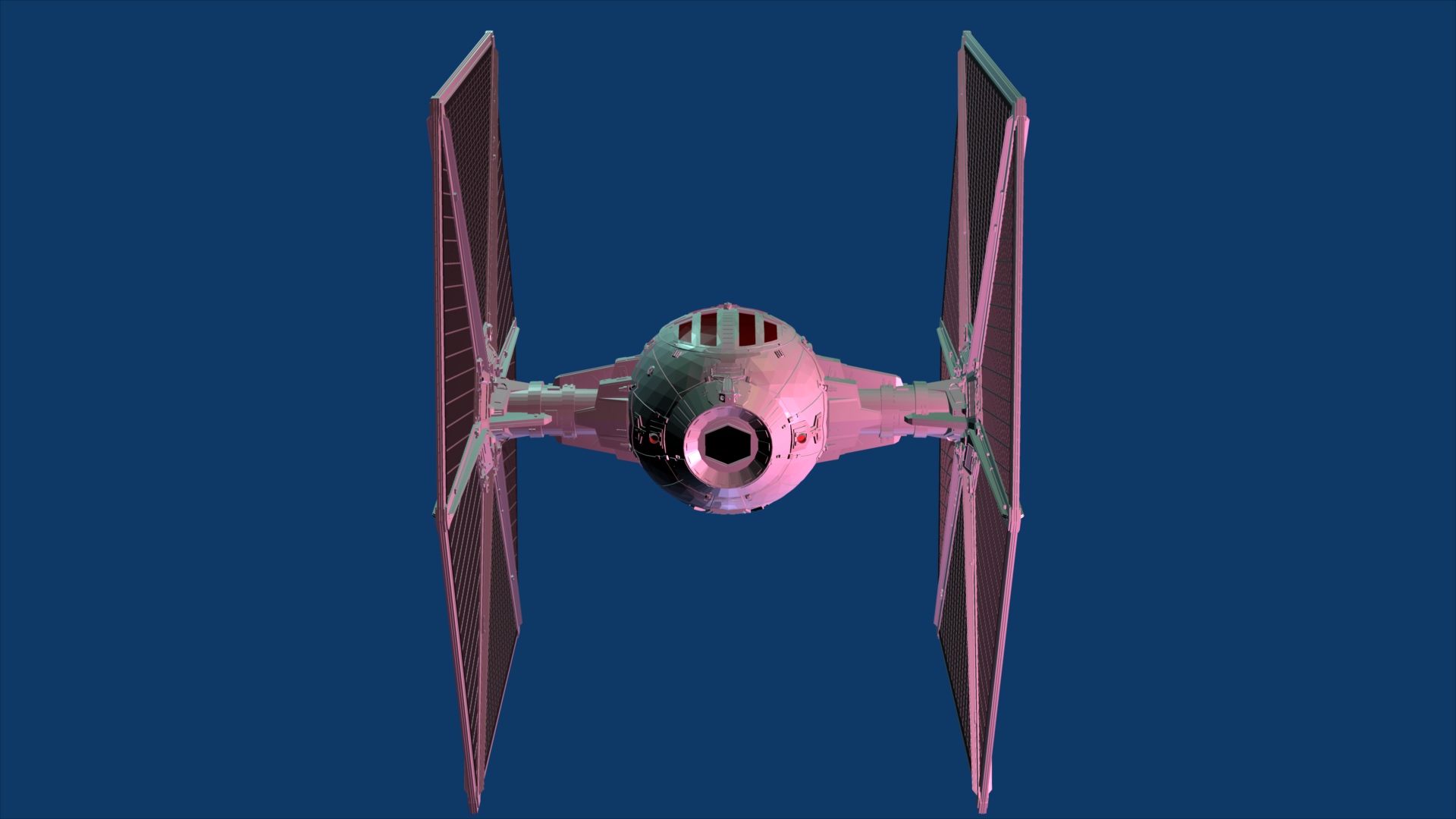
The following frame is the same spacecraft be shifted a little in a
line which is probably 90 degrees straight ahead for the models
intended fly method, and the frame is processed to test that out (in 16
bits High Dynamic Range per rgb component with cinepaint) (size is also
1920x1080 full HD):
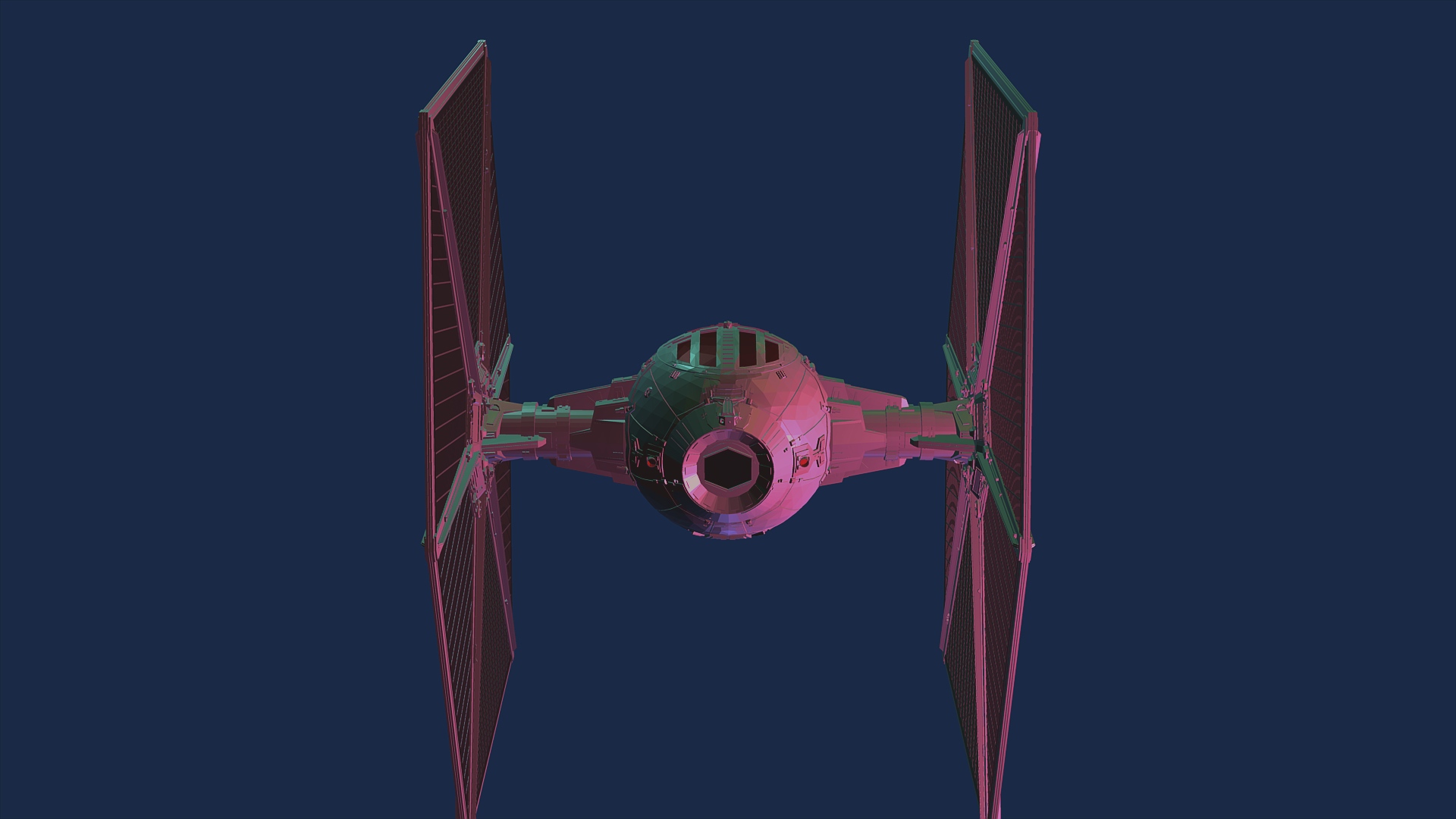
Now I've made a motion blur of the movement between the previous frames
(you could peek in the gelato model file how), computed in under 3
minutes on the quadro notebook (on Linux with gelato pro 2.2):
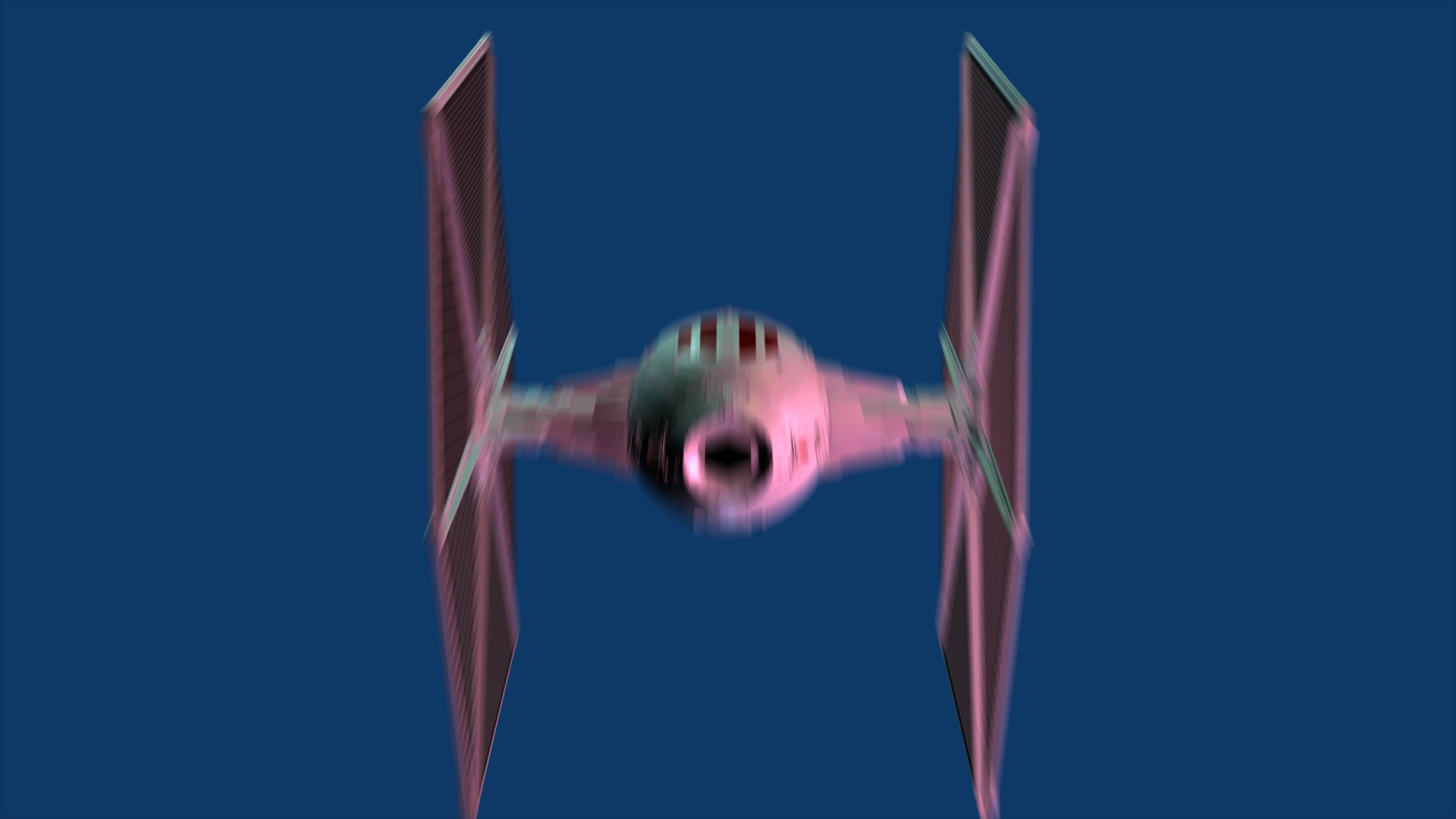
This is a downscaled rotation motion blur rendering (around the
vertical axis):
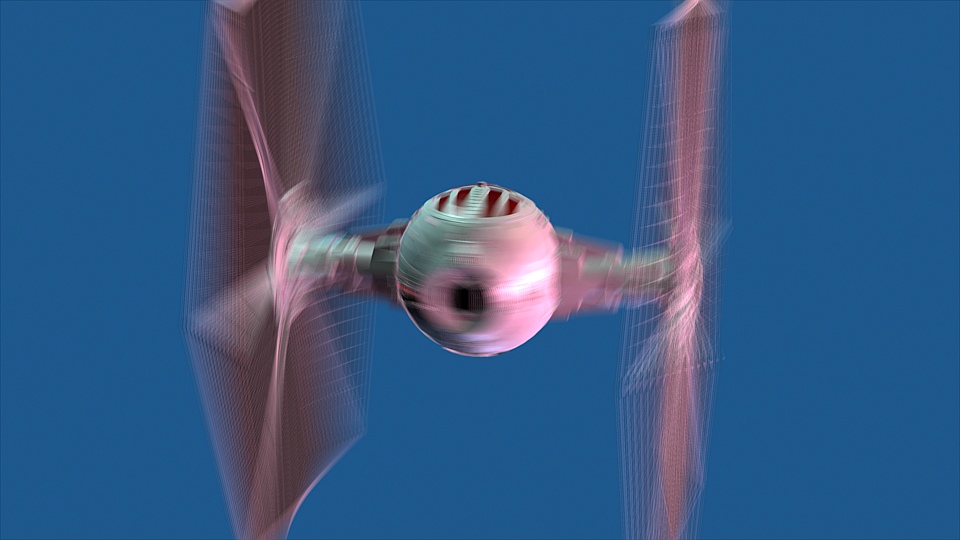
And on rotating around the axis axis:
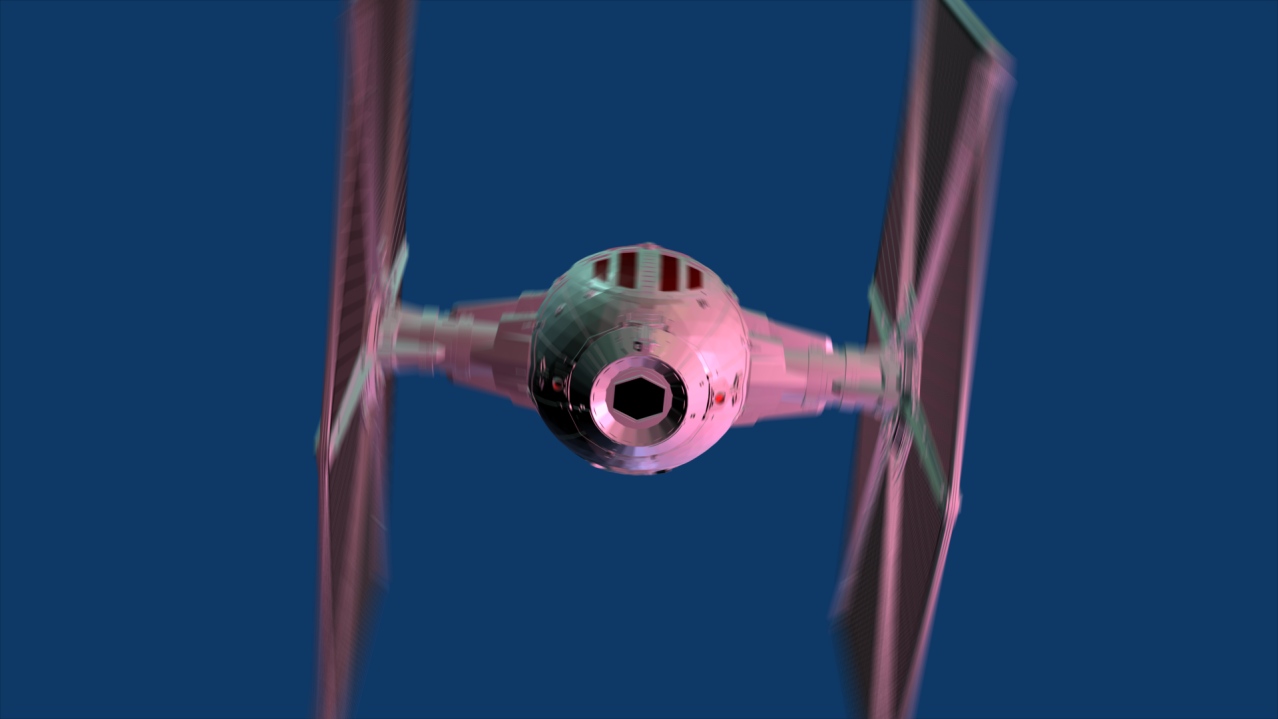
post processed (in 16 bits linear per RGB component) with Cinepaint:
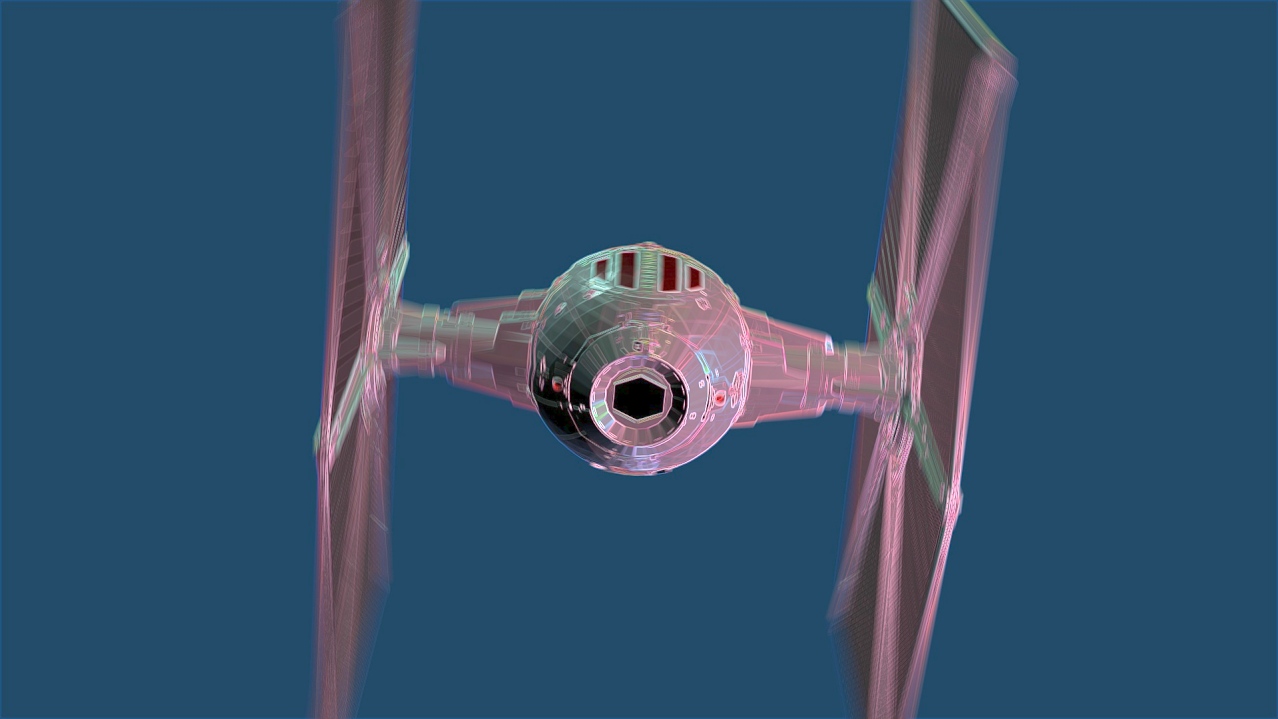
different amount of translational motion blur:
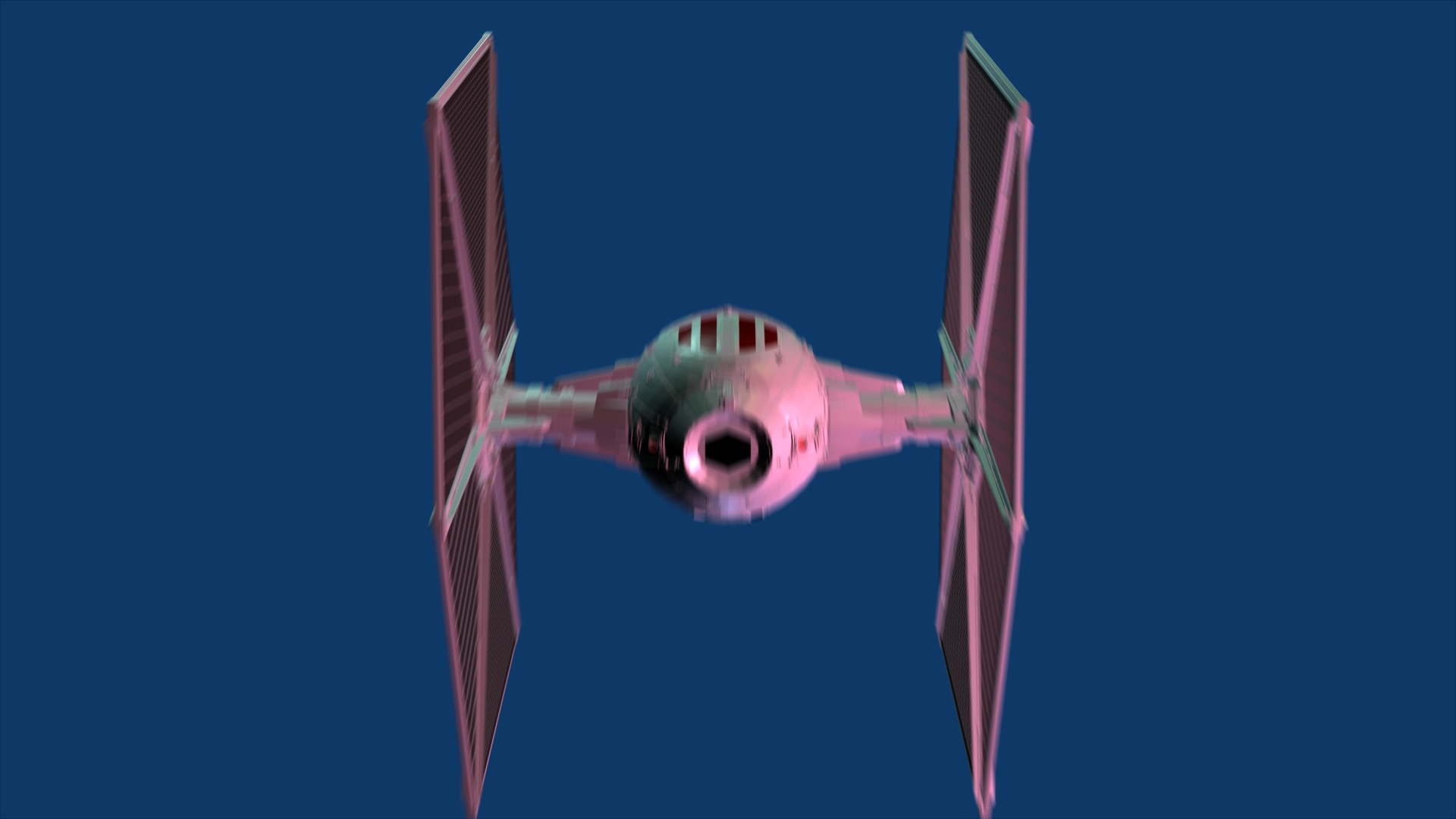
The rendering of a sequence of 40 frames took place on the 3 GHz dual
core pentium (D) machine with NVidia 6700 card and gelato pro on it, in
this case on windows XP (Linux on the same machine also has Gelato Pro
installed) from a Tcl scriptI made), both the CPU, the GPU and the
Purevideo processor were working simuataneously for some hours on a row
on the fairly heavy (albeit years old) machine.
ani1.tcl
the animation script which uses the gelato files
rename.tcl
rename ranges frames
togif.tcl
convert 16 bit per comp. TIFF files to high Q Jpegs
In fact before I started the animation I had to figure out how to get
Gelato graphics files to do transformations of the whole model (it
turned out an additional Push/Pop transformation command pair can also
change a absolute Transform command per object called from external
files (a few dozen), and how to get the motion blur command set to
work, in this case I used half a frame time shutter time with a 25 full
frames per second frame rate. For the frames where th spacecraft gets
close, maybe more interpolation frames could be utilized by gelato.
Since the machine was not exactly new or unused anymore, it has had the
graphics card fan not working good at times, and when that happened the
other day, lengthy rendering like below would risk get it hotter than
100 degrees Celcius, which may at some point break it, so below there
is a temperature meter to make sure the fan works. Bit of a hassle to
make that work at night, since I don't know wether the machine will
halt when overheating threatens to take place.
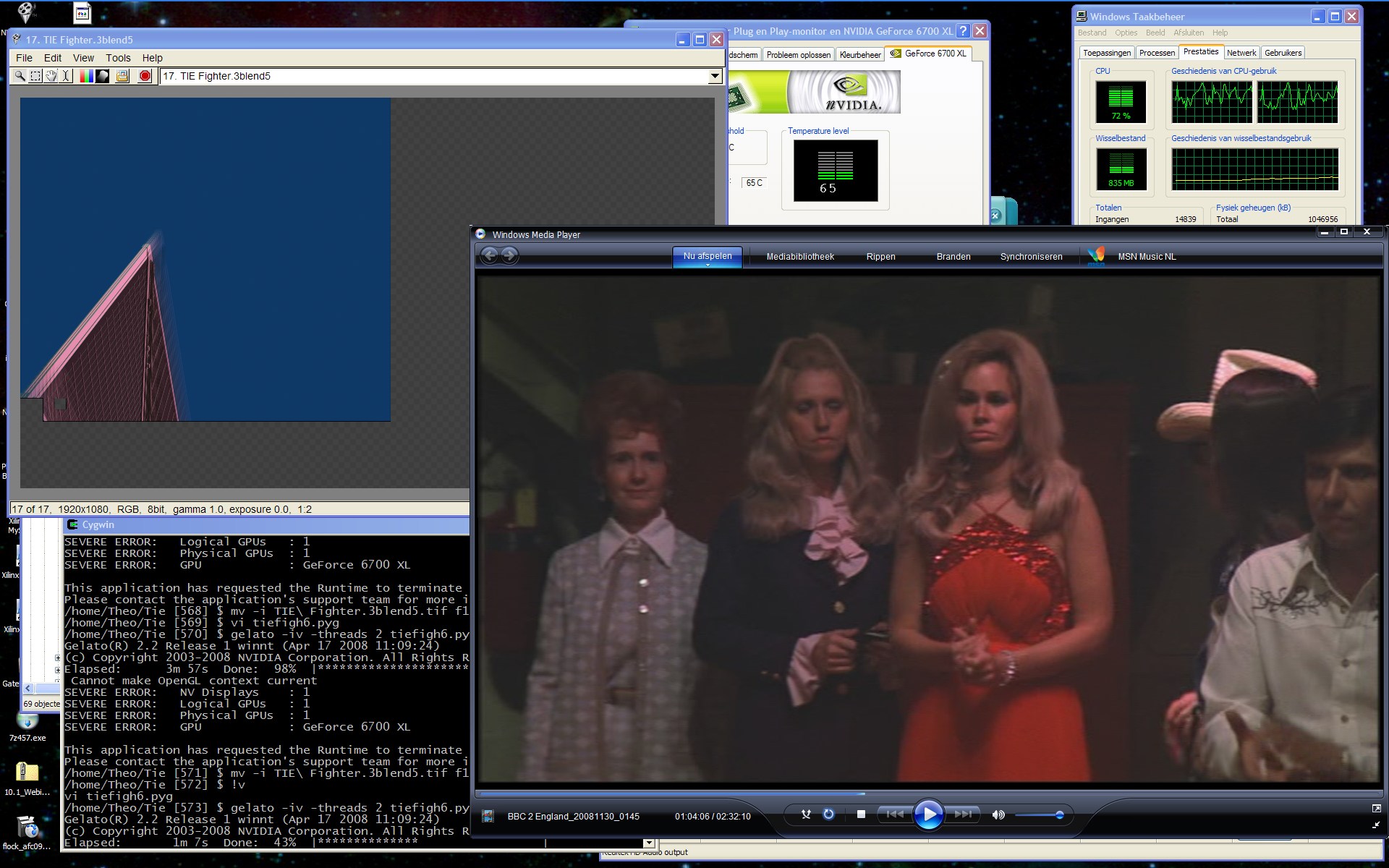
The cpu use of the two cores is reasonable, but honestly when gelato is
set to use both cores, it gets varying results, sometimes close to
factor 2 speedup, sometimes only 60% total efficiency. The two cores
make it possible to watch live sattelite TV on the machine at the same
time as rendering, with a full HD screen, which is cool. Those 230
watts are at least good for something.
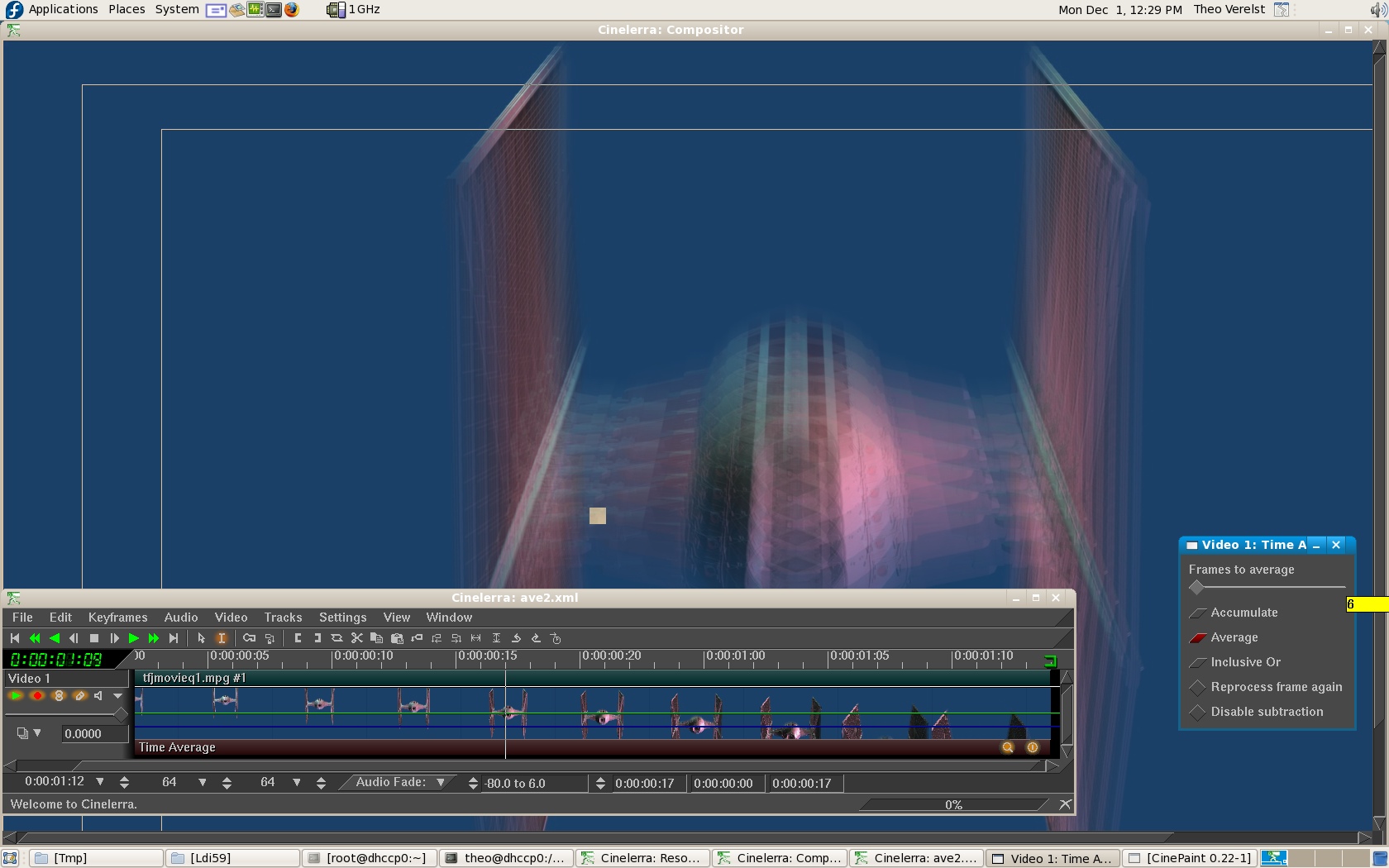
I used Cinelerra to process the resulting frames (infact I used a mpg2
movie I made from the frames in 99% quality Jpeg files which I made
from 16 bits integer per component (HDR-RGB) TIFF files (no alpha).
Cinelera processes it's intermedeate results in 32 bit floating point
per component RGBA (!) but I in this case didn't feed it the original
CG frames to just try it out quickly, it's about a second and a half
which is processed in a number of seconds by Cinelerra.
The movie composed of the frames:
tfjmovieq1.mpg
VBR q=1 mpg the resulting sequence, playable by wmplayer with
Purevideo hardware acceleration (2.2 Mega Byte)
The processed movie (straight from Cinelerra):
tfjmovieq1p3.mp4
VBR q=1 mp4, the above but with 6 frames (unconditional)
averaging (1.3 MB)
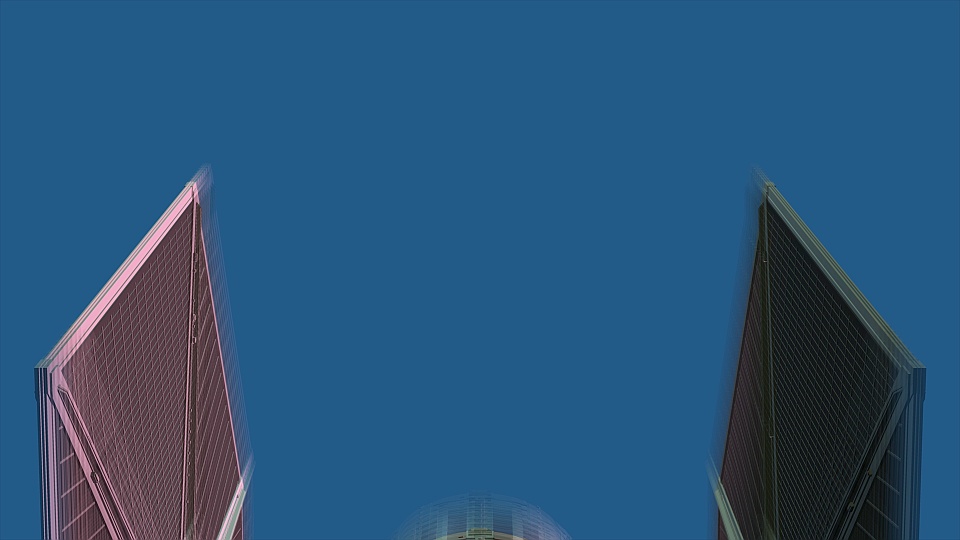
Stanford Trees
Dryads is scientific software which lets one generate a tree from
parameters like branch number, branching amount, angles, colors, etc,
which is fun, and it uses bigtime resources on a PC with graphics card:
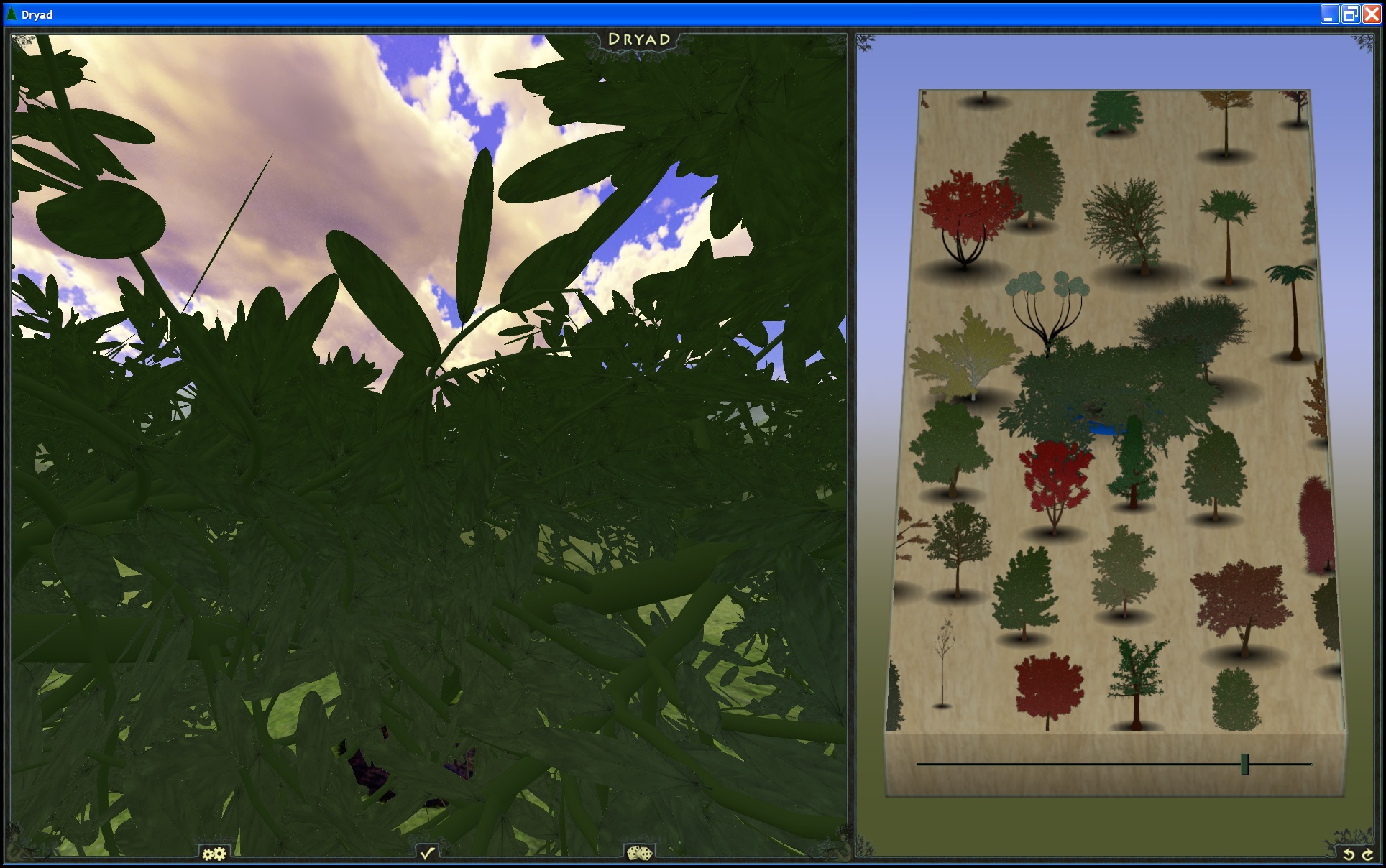
There´s a web repository with the results from all users.
I couldn´t resist trying out the savable .OBJ graphics
file, loaded in blender, and did a tryout Gelato render:

not very great yet, pretty decent dual core use (it´s a 56
megabytes of gelato data) and a very interesting idea, maybe there are
NURBS in the model, and maybe somewhere they got lost in the graphics
chain, it would be nice to have beziers with nice lighting and (sub)
surface properties in a powerful gelato render.














